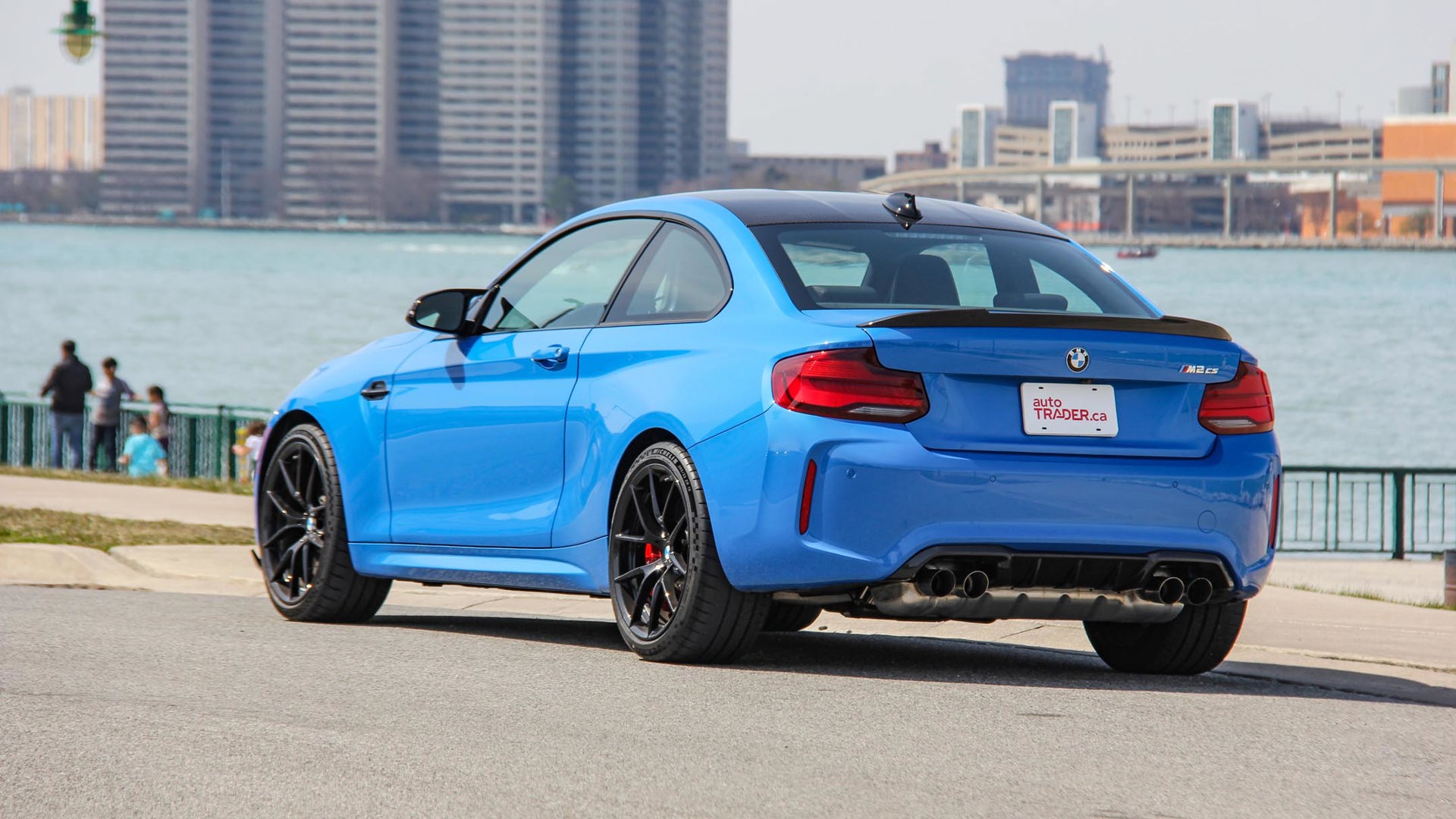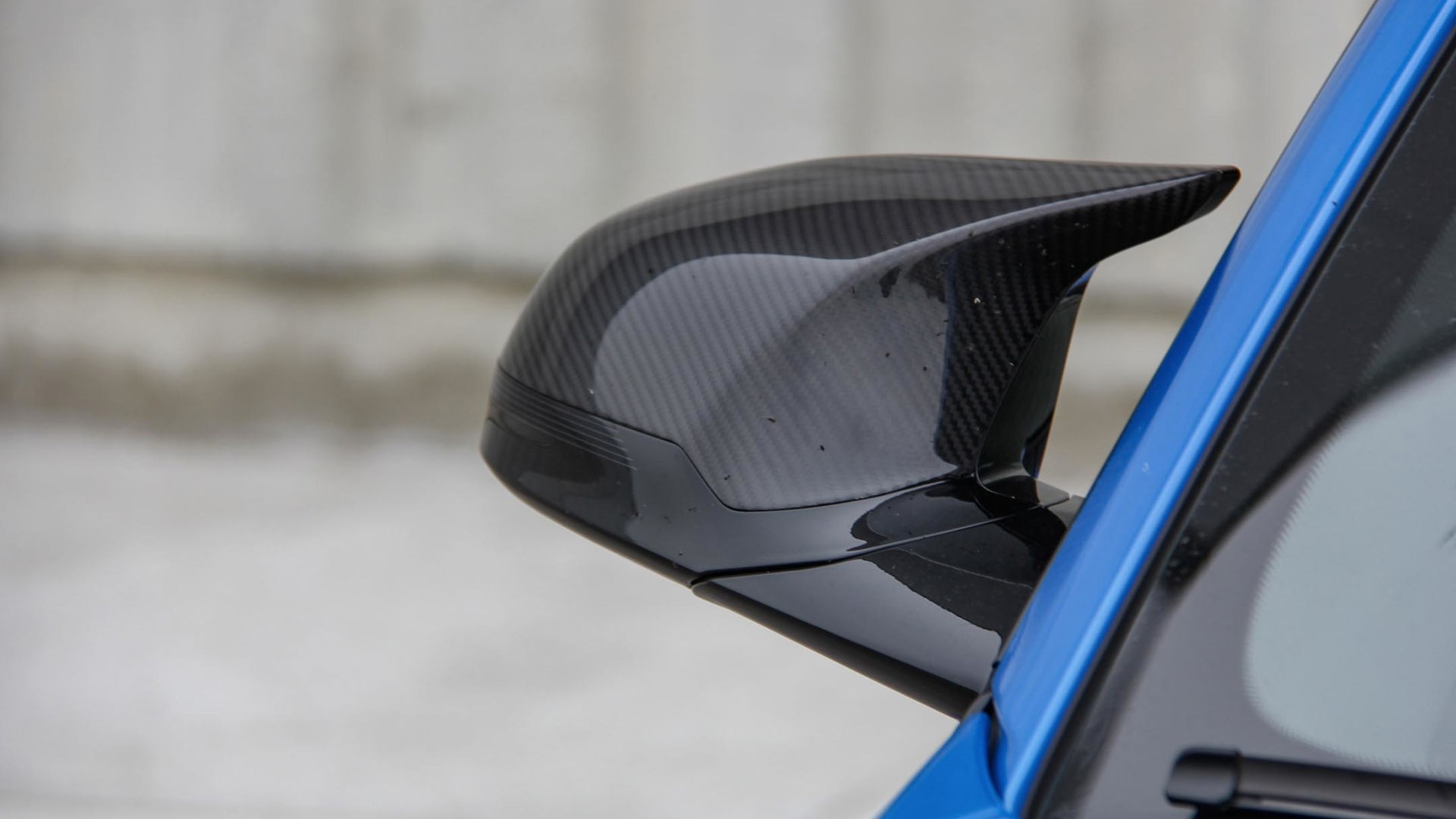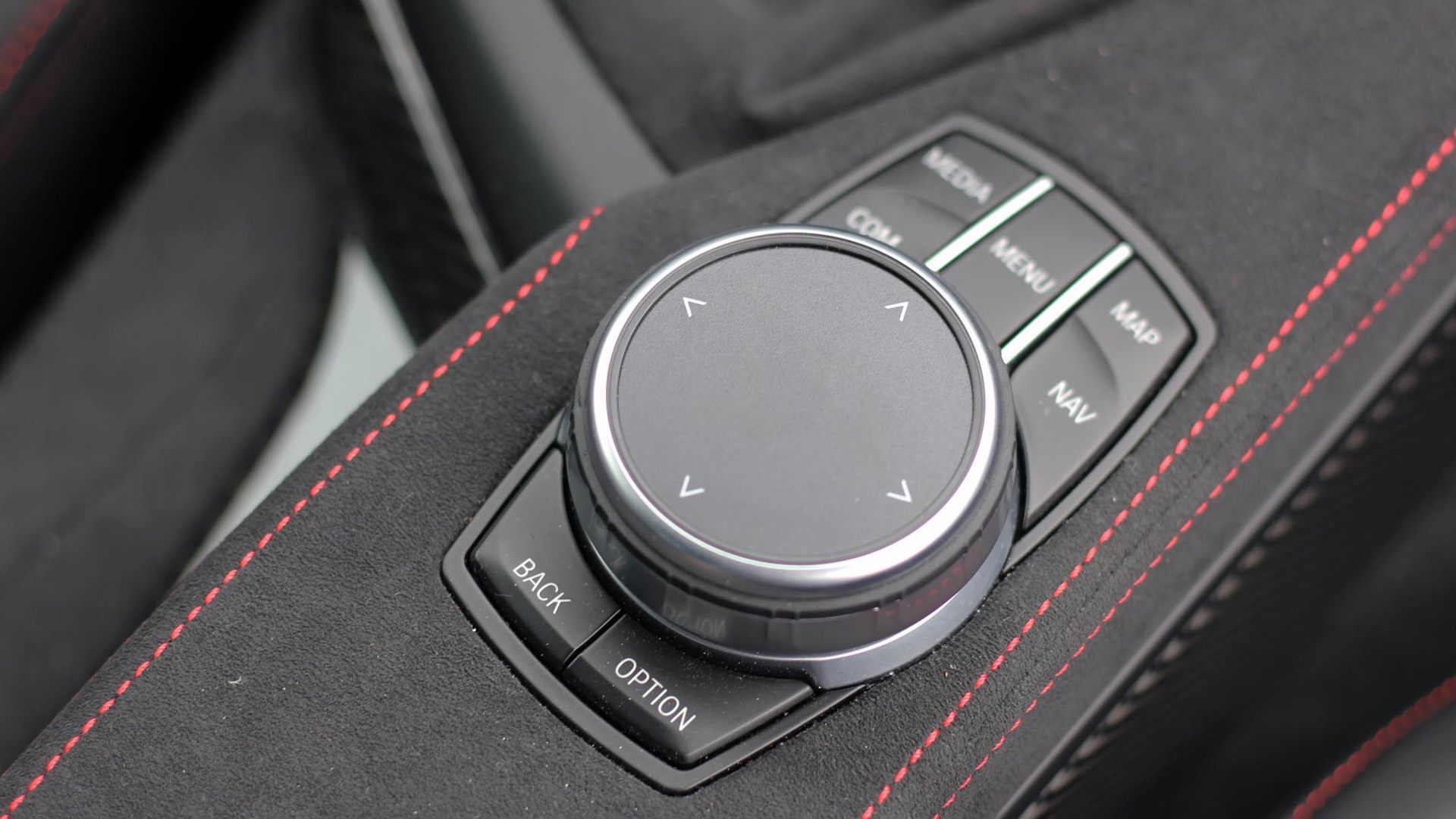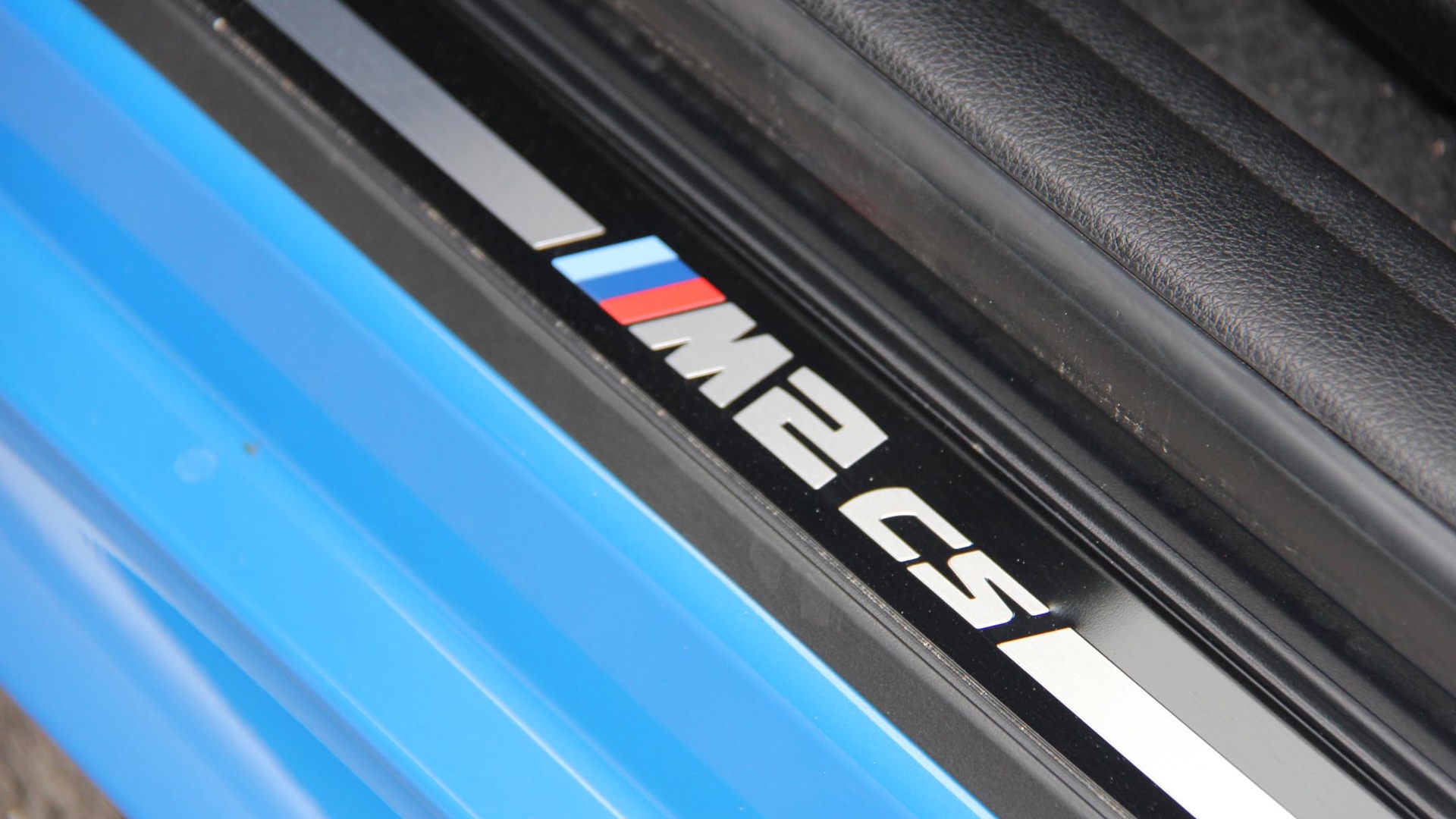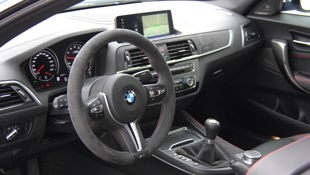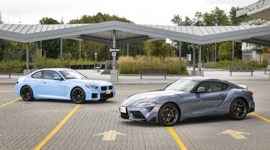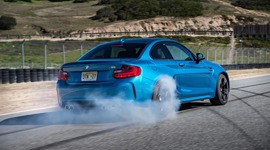 AutoTrader SCORE
AutoTrader SCORE
-
STYLING9/10
-
Safety6/10
-
PRACTICALITY6/10
-
USER-FRIENDLINESS8/10
-
FEATURES6/10
-
POWER8/10
-
COMFORT5/10
-
DRIVING FEEL10/10
-
FUEL ECONOMY7/10
-
VALUE7/10
More and more these days, I find myself uttering phrases like, “back in the day” and “once upon a time” with increasing frequency and frustration.
As someone who relishes the task of driving, I abhor anything that takes away from that experience. Generally, my ire is directed at the lack of manual transmissions and rear-wheel-drive powertrains, unnecessary techno-nannies, or the sheer size and weight of most modern vehicles.
At a time when every second vehicle on the road seems to be a silver SUV with cookie-cutter styling and some semblance of autonomous driving capability, the 2021 BMW M2 CS is a breath of fresh air. It may utilize modern technology and lightweight materials, but its essence harkens back to a bygone era.
Styling: 9/10
The 2 Series has thankfully been saved (to this point, at least) from inheriting the ugly mug of its larger 4 Series sibling. Unlike its stablemate (and the 3 Series sedan), it’s a car you won’t want to park nose first in the garage to avoid looking at it. The aggressive front bodywork accentuated by the lower splitter and bulging vented hood is visually captivating.
Bright red Brembo brake rotors catch the eye behind the black 19-inch wheels sporting low-profile Michelin Sport Cup 2 rubber, and little carbon-fibre bits and pieces are scattered around both inside and out. The highly bolstered leather and faux suede sport seats are tastefully adored with contrast stitching and subtle M striping logos, the latter of which are lighted.
Safety: 6.5/10
The M2 requires your utmost attention behind the wheel. Driving some so-called sport coupes may be a dull affair these days, but not this one. In that vein, advanced safety equipment is relatively limited. There’s federally mandated equipment like a back-up camera and an anti-lock braking system (ABS), but no lane-keeping aids, collision warnings, or automatic emergency braking technology. It does, however, come equipped with adaptive cruise control, automatic high-beams, rain-sensing wipers, and front and rear parking sensors.
Features: 6/10
If you don’t need it to enjoy the drive, you won’t find it here. Heck, there isn’t even an armrest for the driver because both hands will be occupied. The updated infotainment system is easy to navigate via buttons and dials mounted on the steering wheel and centre console. The CS has Bluetooth and Apple CarPlay, but no wireless charging.
Aerodynamic splitters and spoilers are made of carbon fibre, as is the roof, mirror caps, and various interior panels. Adding to the list of standard fare is only a handful of options, including metallic paint ($895), the faux-suede-wrapped M steering wheel ($600), and a storage compartment package ($350). There is a parking alert that can be turned off, and various console-mounted buttons to configure the driving experience through adjusting suspension dampening and steering.
User Friendliness: 8/10
The light weight, diminutive proportions, and keen driving dynamics of the CS make it relentlessly fun and flickable. Clutch action feels substantial but not arduous, while the manual shifter is as smooth as butter and precise. It’s easy to toss around and bring it back under control in a manner that doesn’t risk you soiling yourself. There is some electronic traction intervention which can be overridden. The car will also hold itself when stopped on a steep incline before setting off, and in sport mode the throttle will blip to match revs on downshifts. I’m rarely one to request more technology or driving aids but given how the CS is likely to be driven, a head-up display would be appreciated to help monitor revs and speed limits.
Practicality: 6.5/10
By its very nature, the CS won’t appeal to (or satisfy the needs of) the average car buyer, however it does exactly what it was designed to do. And it does it well. It’s a small coupe, which requires some gymnastics to access the back seat. There’s no wireless charging, or even a place to safely store your phone for that matter. The trunk isn’t massive, but it is adequate. Unless your commute resembles the smooth asphalt and serpentine curves of California’s Mulholland Drive, the C2 would be rather abrasive as a daily driver. But get it on the right road or track and you will immediately and thoroughly be gratified.
Comfort: 5/10
Surfaces are swathed in faux suede and leather or covered in hard carbon fibre. The highly bolstered power leather sport seats may be heated (but not ventilated) and keep you securely in place, but the CS isn’t a car that coddles its passengers in luxury. Driving the M2 CS is not so much relaxing as it is invigorating. Feedback, handling, and road noise create a visceral experience. Even as I’m lamenting the tragic loss of many a purist sports car from the ranks of manufacturer lineups, I understand why it happens. Many friends who I would consider driving enthusiasts have traded in their driving gloves for Dockers. Whether their next stage in life led them to a minivan, an SUV, or even a sedan, I know precious few people who own a manual transmission these days – blaming a lack of convenience in traffic, or bad knees. If that’s you, the M2 CS can also be had with a dual-clutch automatic transmission.
Everything is easily within reach in a cockpit that some may find confining, while the rear seating area is even smaller. It’s not Porsche 911 cramped, mind you, but it’s not exactly spacious for the rear passengers either.
Driving Feel: 10/10
This is where the M2 shines. By the grace of all that is pure and holy, the CS tested was equipped with three pedals. A six-speed manual transmission is offered as standard equipment, while a seven-speed automatic is available as an option. The adaptive suspension is compliant but firm, even in its softest setting, and Michelin Pilot Sport Cup 2 tires let you read the road through the fat M steering wheel – for better or worse. Steering inputs command your attention, but it can carve corners with surgical precision.
The M2 CS harkens back to a magical time in automotive history when BMW was making cars for people who loved driving. If rowing your own gears while wringing out its inline-six-cylinder engine and cracking the back end loose at will doesn’t put a giant smile on your face, well, I suggest checking your pulse.
While the retina-roasting hue of the bright Misano Blue paint was not at all subtle, the gurgle emitting from the rear pipes is. It’s just enough to add a hint of character during start-up or when blipping the throttle on downshifts, without being alarming or aggravating for your neighbours.
Power: 8/10
BMW knows how to build a straight-six. Packing a twin-turbocharged 3.0L engine generating 444 hp and 406 lb-ft of torque in something that weighs only 1,583 kg (3,489 lb) is about as much fun as you’d think it would be. The extra tire grip, added power, and reduced weight of the CS means that it’s capable of sprinting from naught to 100 km/h 0.2 seconds faster than the 405-hp M2 Competition at 3.9 seconds. Even with substantially more torque on tap than the naturally aspirated M cars of old, turbo lag is a thing. Depending on where you are in the rev range, it takes some time for them to spool up before the onslaught of forward velocity. Wind it up and dump the clutch, though, and you’ll be melting away rubber rather than miles.
Of course, a Ford Mustang Shelby GT350 doesn’t have the same brand cachet as a BMW, nor the exclusivity of a M2 CS, but what you lose in esteem at the yacht club you gain with the immediacy of torque at all times from the high-revving 5.2L V8 churning out 526 hp and 429 lb-ft of torque. The GT350 and R will zip from zero to 100 in 4.2 and 3.9 seconds, respectively. The naturally aspirated engine’s flat-plane crank and firing order give it an exhaust note that is simply glorious and there’s little doubt that the Shelby GT350 will garner just as much attention as the BMW, but its interior isn’t up to the same level of fit and finish.
The Mercedes-AMG C 63 S boasts a 4.0L twin-turbo V8 making 503 hp and 516 lb-ft of torque – also with a zero-to-100 km/h time of 3.9 seconds. It sounds magnificent and goes like stink, but is also bigger, heavier, and will go through a lot more fuel. It features a slightly larger trunk, but it’s also only available with a nine-speed dual-clutch transmission, so there’s no option to row your own gears. Point: BMW.
Fuel Economy: 7.5/10
Going easy on the throttle and shifting gears at low rpm will return reasonable fuel economy numbers. Tromping the throttle with reckless abandon and keeping the turbos spooled up, on the other hand, will have the converse affect. No surprises there. The Natural Resources Canada (NRCan) ratings for the CS are 13.4 L/100 km city and 9.6 highway for a combined number of 11.7 L/100 km. In a strange and unforeseen set of circumstances that defy even my own comprehension, I managed to best the fuel economy numbers by achieving 10.9 L/100 km over the course of a week with the M2 with a combination of city, highway, and rural driving.
Value: 7/10
Pricing for comparable vehicles like the C 63 S and GT350 R will be within spitting distance of the CS’s sticker price depending on how they’re equipped, but a Porsche 718 Cayman GT4 will run you more money for slightly lower numbers.
The “regular” M2 Competition comes with a starting MSRP of $72,200, so you may ask if the CS is worth the premium. Calculating the value of most vehicles means quantifying the number of amenities you’re able to order within a given purchase price or monthly payment. In a car like the M2 CS, what you get is as important as what you don’t. Like the loss of 38 kg (83 lb) over its Competition sibling, for instance. More power and less weight are complemented by the fact that you’re reducing the likelihood of seeing another vehicle like yours on the road. With a limited production run of a little more than 2,000 globally, you’ll be lucky to get your hands on one.
The Verdict
The BMW M2 CS is the closest you can get to what the M3 used to be, and many wish still was. It’s a driver’s car, pure and simple. It’s meticulously refined in its coarseness. It’s for those who want to feel every subtlety of the road beneath them – for better or for worse.
There’s no question that the number of people this vehicle will appeal to is limited. Then, there’s the small matter of being able to afford it even if you wanted one. Indeed, it fits a small niche. The attributes that would make some potential buyers recoil at the prospect of owning the M2 CS are the very same ones that will make others gravitate towards it like a moth to the flame. It provides a level of feedback and connection to the road seldom felt these days, which can either be gratifying or abrasive, depending on your prerogative. Get behind the wheel and it won’t take long to figure out which kind of driver you are.
| Engine Displacement | 3.0L |
|---|---|
| Engine Cylinders | I6 |
| Peak Horsepower | 444 hp |
| Peak Torque | 406 lb-ft |
| Fuel Economy | 13.4 / 9.6 / 11.7 L/100 km cty/hwy/cmb |
| Cargo Space | 390 L |
| Model Tested | 2021 BMW M2 CS |
| Base Price | $97,750 |
| A/C Tax | $100 |
| Destination Fee | $2,145 |
| Price as Tested | $101,840 |
|
Optional Equipment
$1,845 – Metallic paint, $895; M Alcantara steering wheel, $600; Storage compartment package, $350
|
|


